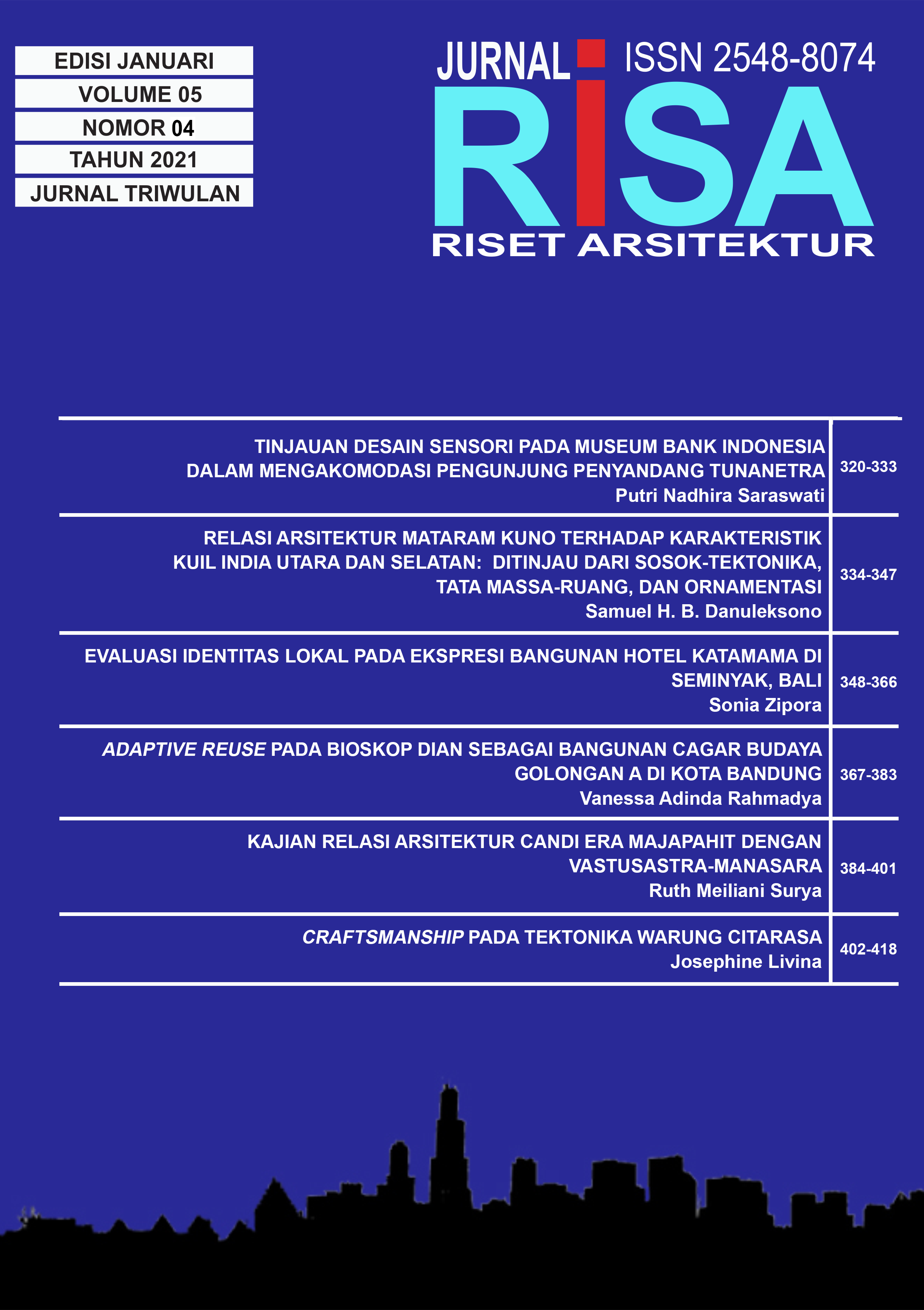CRAFTSMANSHIP IN WARUNG CITARASA’S TECTONICS
DOI:
https://doi.org/10.26593/risa.v5i04.5304.402-418Abstract
Abstract- Tectonics in architecture is a construction element associated with the material, goals, and builders of a building. It does not stop there, the result of combining abstract thinking (implicit) and the ability to make (explicit). Craftsmanship also talks about how craftsmen think in creating. The study was conducted to understand the role of designers, craftsmen, in craftsmanship to form tectonics and connections that should be able to bring stories and characters in architecture, especially in this modern era.
Oky Kusprianto (1977-2019) was the principal architect of Studio Apta. Studio Apta's works pay a lot of attention to architectural materials and tectonics. Through tectonics, his work presents liveliness of space in cafes, adventures in stores, and solitude in urban forests. The object taken was Lembang Citarasa Warung, the reason being that it was one of the projects that was experimental on material and was still just being built (2017-2018). The articulation of the expression of the burden between the connections is strong with the appearance of honest elements. Thus what needs to be known is the craftsmanship method used in Warung Citarasa which is related to thinking and making and its adaptation in the modern world which is already relatively different from what was known about previous craftsmanship.
This study uses a qualitative descriptive method by describing the tectonics that are formed and how they are formed through the craftsmanship process. Data collected through direct observation, literature study and interviews. Tectonics are divided into three based on the main material, namely stone, iron and wood tectonics. The results then become a reference in the identification of craftsmanship in the process of forming the tectonics. The first is based on knowledge (thinking hand) which is subdivided into explicit and implicit knowledge. Then identified again by the skills (working hand) which is divided into analog and digital tools. After that, an analysis of the aspects of collaboration between the development actors responsible for tectonic formation. Finally, the results of the analysis of the three aspects are combined to analyze the craftsmanship process that occurs in each tectonics.
Tectonics can be classified into three, namely stone, iron and wood. In experimental wood tectonics, there is little knowledge or experience, but most exchanges of knowledge between actors and the use of analog design tools. In contrast, in stone and iron tectonics, there is more explicit knowledge and experience possessed by actors. The effect, design flow and construction are linear. The majority of stone and iron tectonic design processes use digital media, this is in line with the statement that architect craftsmanship in modern times cannot be separated from digital influence. The lack of digital use is rewarded by the collaborative process between designers and builders who have the same goal in forming the tectonics, strong communication skill and tools, shared common knowledge, and the advancement of analog media in translating hand language using painting software with tablets.
Key Words: craftsmanship, architecture, tectonics, warung citarasa lembang
Downloads
Published
Issue
Section
License
Copyright (c) 2021 Josephine Livina

This work is licensed under a Creative Commons Attribution-NonCommercial-ShareAlike 4.0 International License.












